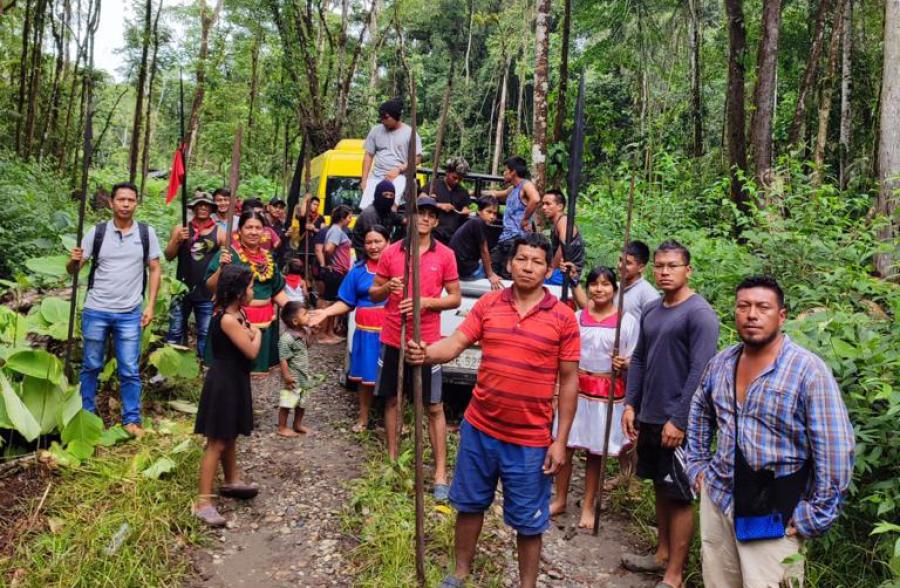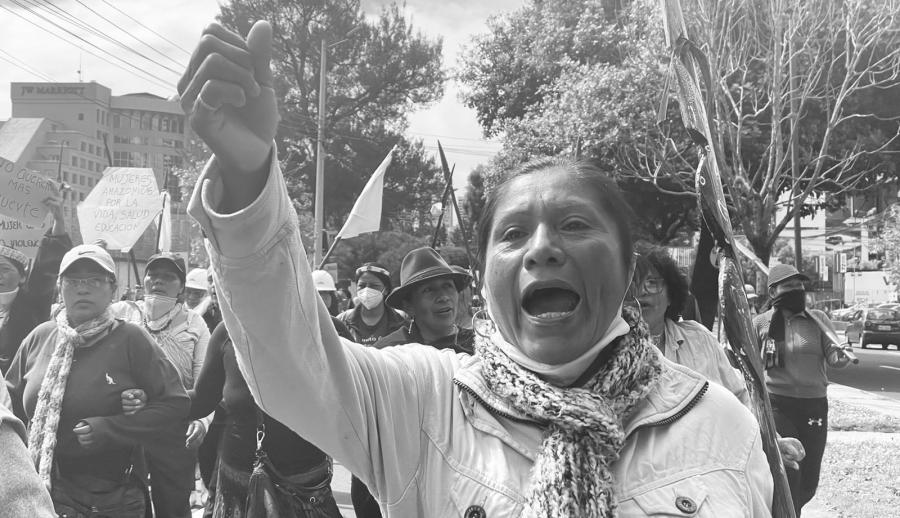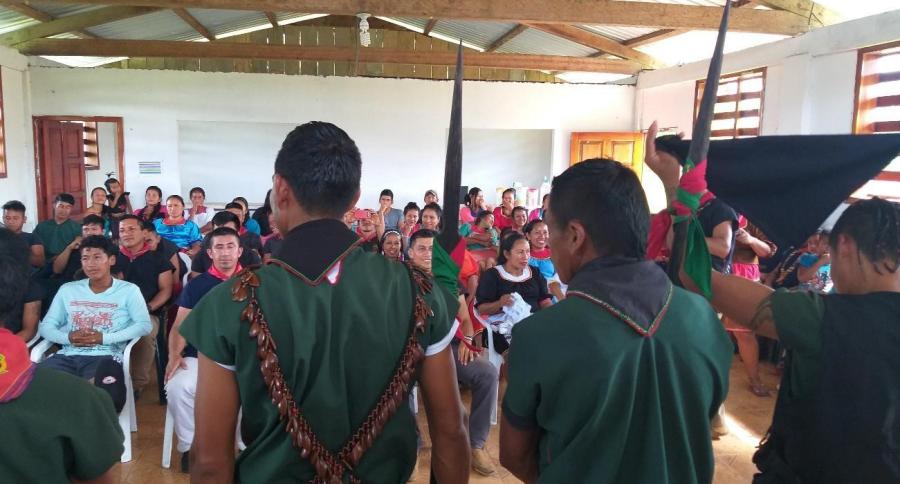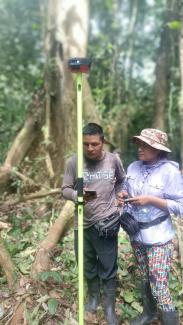
The Shuar Peoples are one of the Indigenous nationalities living in the Ecuadorian Amazon rainforest. They have been working for many years on conservation strategies and land stewardship to mitigate biodiversity and wildlife loss on their lands. Recently, they played an important role also in the fight to protect the Yasuní National Park, located within the northern Amazon rainforest, the homelands of the Shuar, Waorani, Kichwa, Tagaeri, and Taromenane Peoples, among others. The Yasuní Biosphere Reserve, a 4,000-square mile national park in northeastern Ecuador on the border with Peru, is located at the intersection of the Andes, the equator, and the Amazon regions. A 2021 study by the Wildlife Conservation Society documented 1,300 types of trees, 610 species of birds, 268 species of fish, and at least 200 species of mammals, including 13 types of primates, living in the Yasuní.
Raquel Tsahuanda (Shuar) was born and raised in the community of Yamanunka in the Sucumbíos region. From a young age, she showed interest in environmental issues. Having witnessed the effects of extractivism on her land, she has become one of the most active women in the fight to protect life on her territory.
“No to Exploitation, Yes to Life:” The Fight for the Yasuní
“No to Exploitation, Yes to Life:” this was the slogan created by Yasunidos, a social movement that organized sit-ins and marches to decisive effect to achieve victory in the popular referendum to keep Yasuní Biosphere Reserve, one of the world’s richest places in terms of biodiversity, free from oil extraction and keep over 726 million barrels of oil underground. On August 20, following almost a decade of advocacy by Yasunidos to get the referendum on the ballot, 75 percent of the electorate participated in a historic turnout to make their voices heard with 54 percent of a “Yes” vote.
Ecuadorian citizens showed the world that they chose to prioritize life over profits. After the Minister of Energy and Mines initially rejected the results, the government subsequently issued an official statement reaffirming its commitment to respect the will of the people. This is the first time that citizens from an oil producing country were able to decide on the limits of resource extraction. A great part of this success can be attributed to the movement of Indigenous nationalities in the Amazon rainforest, who worked tirelessly to achieve this historical result.
Ecuador’s 2008 constitution was the first in the world to recognize legally enforceable Rights of Nature, codifying the Kichwa concept of sumak kawsay, abundant life in balance with nature. “One of the most impactful events was carried out close to the referendum date when we organized a march in Puyo, a city located in the middle of the forest, which is also the headquarters of the Confederation of the Indigenous Nationalities of the Amazon,” Tsahuanda says. “We were in the middle of Yasuní territory together with our Waorani, Siona, Siekopaai, Cofán, and Kichwa brothers and sisters.
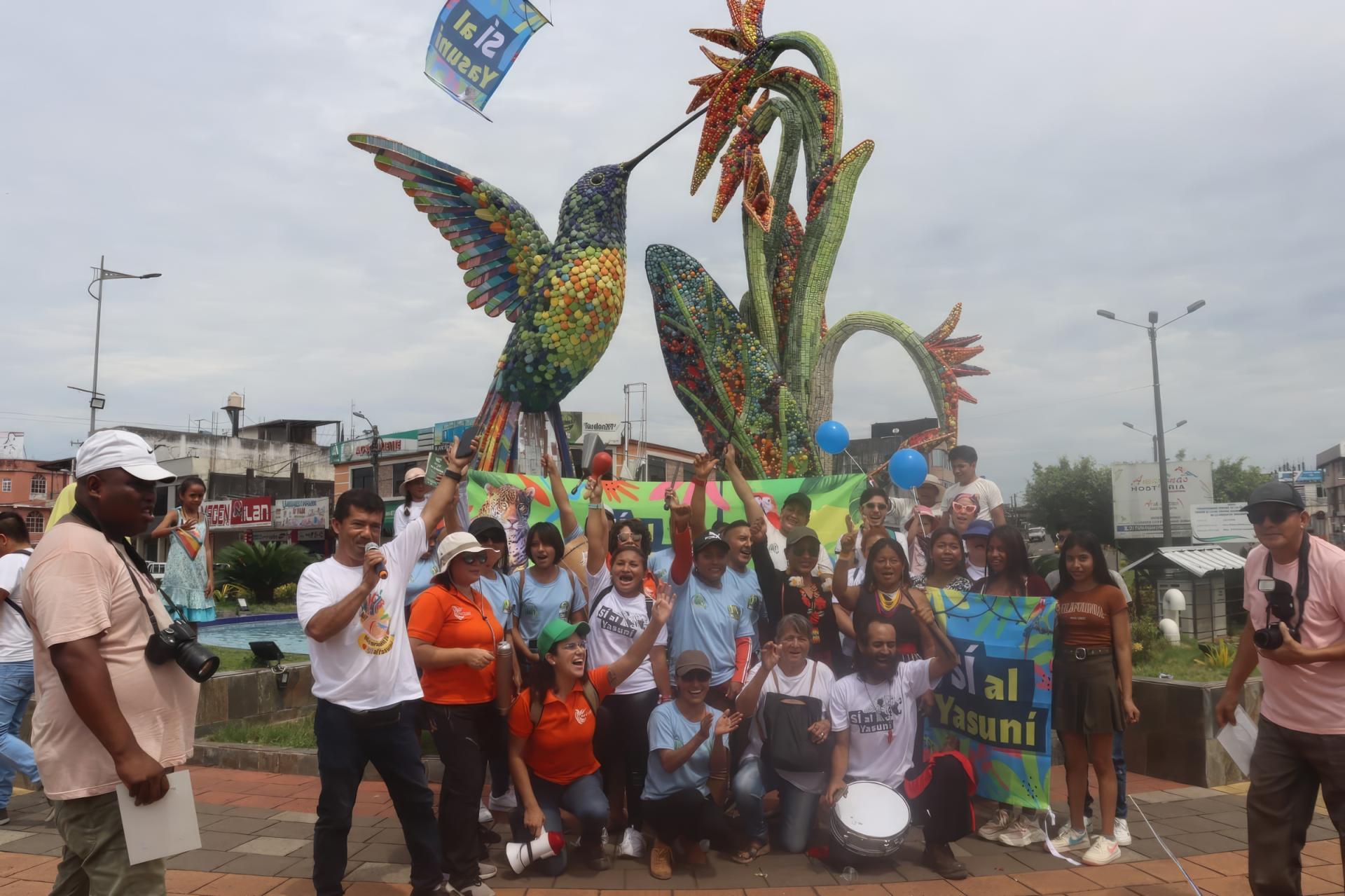
An event organized by Yasunidos in the Shushufindi province. Photo courtesy of Union of People Affected by Chevron-Texaco–UDAPT.
Among all these Nations, the presence of the Waorani was the most striking. They live deep inside the territory and in order to reach the march they had to navigate the river and walk through the forest for three days. Their effort and dedication was really contagious and confirmed once more that the fight we were carrying on was worth being fought.”
Reflecting on the difficulties Yasunidos faced in organizing a successful campaign, Tsahuanda says, “During the protest, we had to fight against the [mainstream] media. In Quito, there is a part of the population that does not understand our efforts and our fights. They are victims of fake news and they think that extractivism is the only viable way to achieve development. This situation made us reflect on the importance of community media. We insisted on using the [media outlets] that we have access to and that we developed in our region, and I believe that they played a very important role in achieving the victory. . . . The Yasuní campaign was a great success for our Peoples and for the future of the Amazon rainforest.”
Indigenous community media broadcast in Indigenous languages is essential to Indigenous organizing, awareness raising, and movement building. Community radio in particular plays a key role, as its universal and free nature gives many remote communities and Indigenous audiences access to information that they would not have otherwise. Indigenous-produced programming strengthens Indigenous Peoples’ capacity to claim their rights and enables access to essential information and broadcasting in Indigenous languages that ensures widespread understanding and cultural continuity.
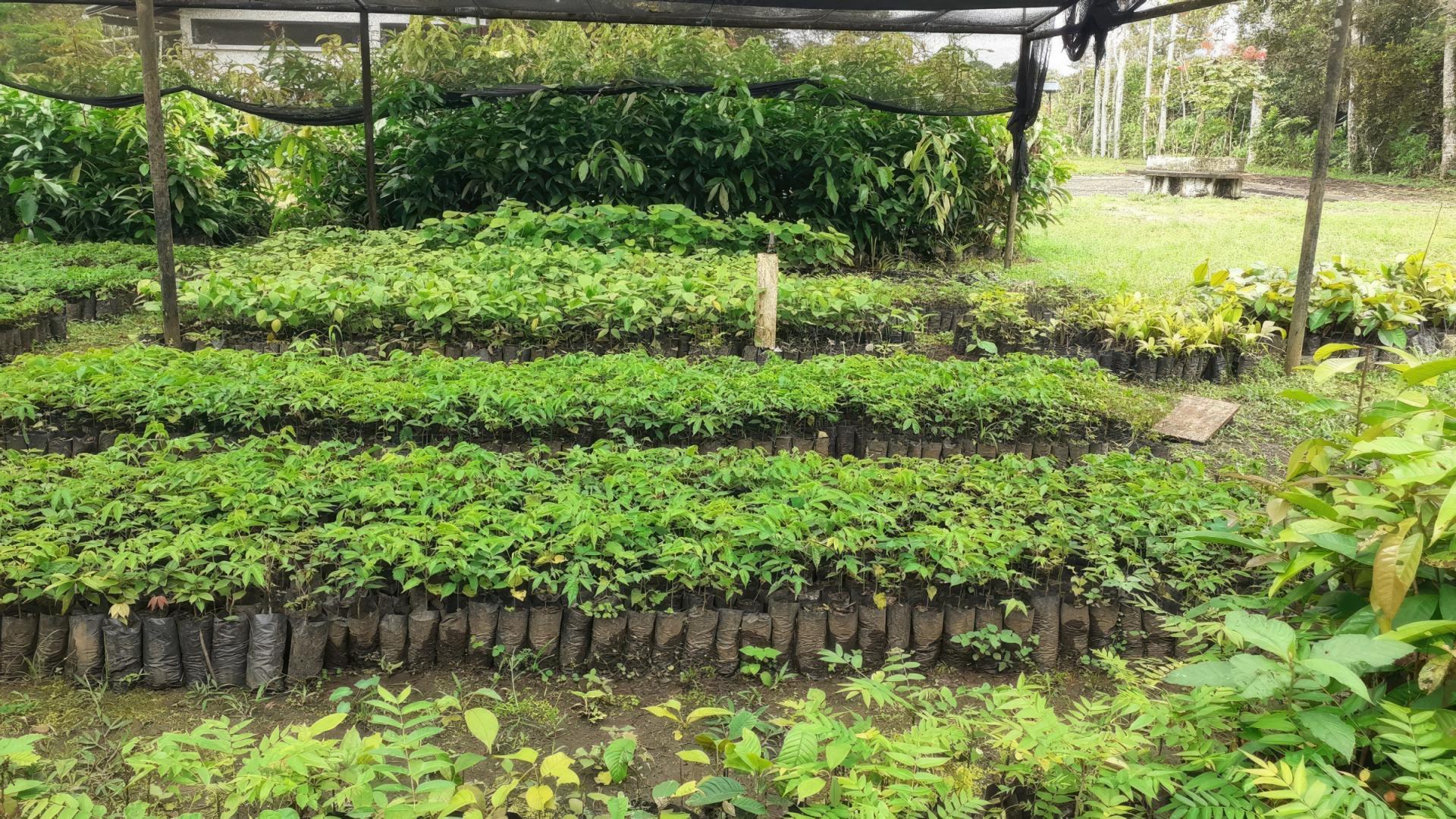
The results of a seed gathering.
Biodiversity Restoration in Yamanunka
“I was born and raised in the community of Yamanunka, and over the years I observed how it has been affected by assimilationist practices from outside. The loss of our identity is something extremely serious that has been affecting us for many years. Here, as well as in other Shuar communities, we realized the danger that these acculturation processes represent for us, and for this reason we are designing projects of cultural revitalization. This is not an easy task: there are not a lot of Elders left in the community and the kids cannot speak our language. We do not have much time,” Tsahuanda warns.
Tsahuanda and her family believe that taking care of their land is a first and fundamental step toward cultural revitalization. She studied land management in relation to climate change, and she is now working to map her territory through activities of land monitoring using some of the latest mapping technologies, such as ODK Collect. Because they often lack resources to hire a vehicle, for the last three years, Tsahuanda says she and her colleagues have been walking “up to five hours in order to get to the places from which we send our reports.” They cover all 8,800 hectares (about 40 square miles) of the municipality in order to get to the places affected by deforestation and use an app to upload data to a digital map to record the use of the land in the area in real time. “Right now, deforestation represents a huge issue, Tsahanda says. “The malanga (a tropical tuber) invades our land and brings heavy deforestation. It is, together with oil spills and the mecheros (gas leaks), surely among the biggest environmental issues that we are facing.”
The community of Yamanunka is actively working to combat deforestation. Twenty-seven women of the community came together to gather seeds of plants and trees at risk of extinction and are conducting activities of biological restoration. As Tsahuanda explains, “In order to find the seeds, we need to walk long distances inside, towards the heart of the forest, in areas that have not been affected by deforestation. Here we can find seeds that we will replant and use for our handicrafts.” She adds, “there are plants whose seeds have disappeared; they cannot be found anymore around our community. “In these cases we exchange them with other communities, or we look for them at the seed fairs, which are quite popular in the region.” Through these processes, native trees such as the ceibo, the chuncho, the laurel, the guayacán, and the cedar have all been restored.
The dedicated work of the Yamanunka women has restored a great part of the land. However, “the threat is constant,” Tsahuanda says, explaining how, along with deforestation, oil extraction is also raging. “The biggest well is located just 200 meters outside our territory. We still have access to some springs of clean water, but the risk that they will also be contaminated by one of the frequent oil spills is very high. If this happens, we would remain without any access to clean, drinkable water. It is a ticking bomb.”
Top photo: Raquel Tsahuanda and a colleague during one of the activities of land monitoring. Photo courtesy of Raquel Tsahuanda.
